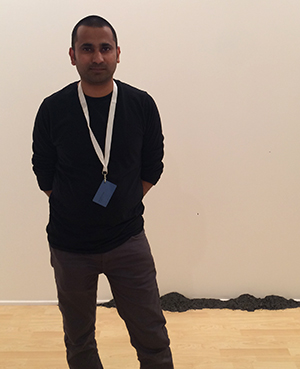
Written by: Zahrah Mazhar
Posted on: March 18, 2016 | 
'Missing Letters' shows the conceptual and minimalistic nature of Basir Mahmood's work

His two pieces couldn’t be more different than each other—Lunda Bazaar, one of his earliest works, is a video shot in Lahore’s busy secondhand clothing market, which relies on both images and sounds to draw in the audience; the second, his most recent work, titled Missing Letters, is an understated sculptural piece that revolves more around the concept than the visual. “I took a risk with Missing Letters, as this is an art fair and people expect to see more than just a white wall—they might not consider it art without fully understanding the concept.”
The idea for the sculpture came to Mahmood when a friend in Germany sent a letter that never reached him. “I became curious and decided to find out what happens to these letters.” This is how he discovered the Returned Letter Office—known as the “Dead Letters Office” during the British colonial period—at the Pakistan Post Office. “The undelivered letters are kept for 30 days, after which, if no one claims them, they are burned.” Mahmood got hold of the ashes of these letters and burned them even further, to the point that there was no visual, no text. “Rather than the visuals, I’m interested more in the journey that the letters have taken—the people who wrote them, the messages they contained, and their fate at the post office, where they become a part of the dead letters.”
Mahmood claims to be more of a viewer than an artist, saying that he finds existing work, and simply positions himself in it. “While spending time with my father, I saw a poet in process. He was a man of limited vocabulary, but his poetry spoke of many things. Similarly, I believe that my art vocabulary is also very minimal, which is why it’s concerned with one idea, one concept, one decision.”
Gesturing to the television playing his Lunda Bazaar video, he said, “It [the market] was already there—I just documented it, and slowed down the visuals and sounds. Once you are an artist, you can’t undo it – everything you see is through an artist’s eye. I looked at the bazaar as a performance—for me, it didn’t need any more work.”
You may also like: